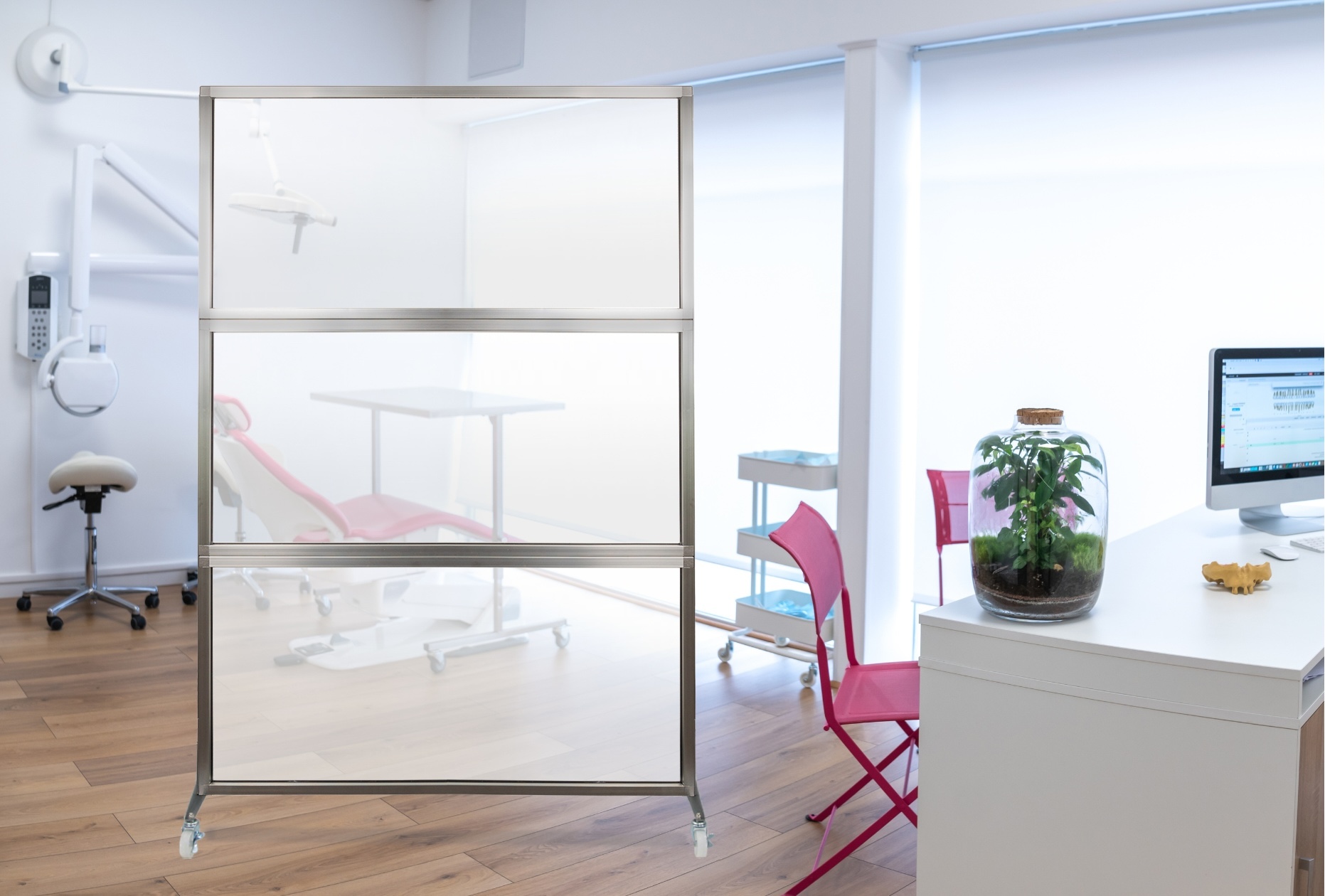Fortify Your Clinic’s Defense Against Germs with Medical Room Dividers
Posted by Kate Murphy on Sep 10th 2024

With the annual cold and flu season, September to April, underway, it's a timely reminder of the importance of preventive healthcare measures. While individuals often visit clinics after becoming ill, it’s important to acknowledge the risk of contracting an illness, specifically a healthcare-associated infection (HAI), at the facility, in even the most sterile environments. In fact, on a given day, one in 31 hospital patients has at least one HAI.
In tandem with safety and cleaning protocols, medical room dividers and partitions can help limit the spread of pathogens, enhancing infection control measures, improving overall patient outcomes.
The Role of Room Dividers in Germ Control
Medical room dividers serve as physical barriers that can help to contain the spread of germs within clinics, emergency rooms, nurse’s office at a school, and other medical facilities. By creating distinct zones within a shared space, these partitions can reduce the likelihood of cross-contamination between patients and healthcare workers. Here’s how:
- Isolation: Room dividers can be used to isolate patients with contagious diseases, preventing the transmission of pathogens to others in the same area.
- Privacy: By providing privacy, room dividers can encourage patients to cough or sneeze into tissues, minimizing the spread of airborne germs.
- Infection Prevention: Room dividers, especially those with vinyl or polycarbonate surfaces, can be easily cleaned and disinfected, reducing the risk of harboring pathogens.

Benefits of Medical Dividers Over Hospital Curtains
While hospital curtains have traditionally been used to separate spaces in healthcare settings, room dividers offer several advantages. Our medical partitions, like the MediPanel™, MediPanel™ Portable Divider, MediWall™ Folding Partition, MediWall™ Privacy Screen, and Polycarbonate Room Divider 360® Folding Portable Partition are made durable polycarbonate. The clear or tinted material can withstand frequent cleaning and disinfection without deteriorating. Simply use mild soap, such as dishwashing liquid, and a non-abrasive cloth or sponge. Hospital curtains, on the other hand, are made of fabric materials which can absorb and trap germs, making them difficult to clean thoroughly and disinfect effectively. The corners and folds of curtains can be hard to reach, potentially harboring bacteria and viruses, too.
Room dividers can provide more privacy for patients, which can be important for their comfort and dignity. Curtains may not offer the same level of privacy. Also, curtains are limited to ceiling tracks and can’t be easily adjusted as room configurations change. Our medical dividers are portable, which is especially useful in emergency situations or makeshift clinics where versatility and flexibility are essential. All in all, hospital administrators should prioritize creating safer environments for clinicians and patients, while ensuring flexibility in their operations.
Be Clean and Confidential in Your Healthcare Space
While the primary role of medical privacy screens is to ensure patient privacy and comfort, many modern screens are designed with hygienic materials that can be easily cleaned and sanitized. This ensures a clean, safe environment and can assist in combatting the spread of infections, especially when proper cleaning protocols are followed.
Begin your journey to a healthier clinic by contacting us for a consultation.

